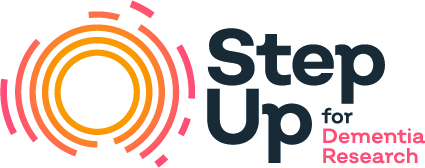Artificial Intelligence To Help Fasttrack a Diagnosis of Alzheimer’s Disease
Friday, July 7th, 2023
Imagine being able to plug a few brain images into a machine, and then being able to say “yes” or “no” that this individual has dementia. Well, this is what a team of researchers from Massachusetts General Hospital recently set out to achieve using a type of artificial intelligence called deep learning[1].
Learning by example
In deep learning, a computer model is trained to perform classification tasks directly from images, text, or sound. The model learns by example. It looks at a large and diverse number of instances of whatever the target is, and then uses this to recognise complex patterns to make accurate predictions. It is the technology behind driverless cars, enabling them to recognise a stop sign or to distinguish a pedestrian from a lamppost.
In the current instance, the model was “fed” 17,076 brain MRI scans collected as part of routine care at the Massachusetts General Hospital between 1995 and 2018. Just 4,213 of these images (across 1060 patients) indicated Alzheimer’s Disease, and 12,863 images (across 4239 patients) did not indicate Alzheimer’s Disease.
Once created, the model was applied to five separate datasets totalling nearly 1900 images. The test sets were Massachusetts General Hospital data post-2019, Brigham and Women’s Hospital data pre- and post-2019, and data imported from other hospitals pre- and post-2019. The datasets were purposefully selected to determine whether the model could accurately detect Alzheimer’s disease irrespective of hospital and timeframe.
High accuracy independent of age
The team found that the model was able to detect Alzheimer’s disease with an average accuracy level of 90.2 percent across the five data sets. One of the key features of the model was that it could detect the disease independent of other variables such as age. Alzheimer’s disease typically occurs in older adults, and so deep learning models can have difficulty detecting the rarer younger onset cases. However, the team addressed this by making the deep learning model ‘blind’ to features of the brain that tend to be overly associated with the patients’ age.
A substantial proportion of uncertainty
Another common challenge in disease detection in the “real-world”, is dealing with data that are very different from the training set. For instance, a deep learning model trained on MRIs from one brand of scanner may struggle to recognise MRIs collected on a different brand of scanner. For this reason, the model used an uncertainty metric to determine whether patient data were too different from what it had been trained on for it to be able to make a successful prediction. This was helpful in establishing a high accuracy rate. However, it meant that accurate predictions were only made on one third of the data, and that over two-thirds of the data was omitted. Moreover, we need to remember that imaging is only one of several ways that dementia can be diagnosed, plus Alzheimer’s disease pathology can show up on an individual’s brain scan and that person still not have the condition. Nonetheless, given the accurate results across time and sites, that authors hope that the model offers a generalizable approach for disease detection in heterogeneous clinical data.
[1] https://journals.plos.org/plosone/article?id=10.1371/journal.pone.0277572&TRILIBIS_EMULATOR_UA=Mozilla%2f5.0+(Windows+NT+6.1%3b+Win64%3b+x64%3b+rv%3a57.0)+Gecko%2f20100101+Firefox%2f57.0

